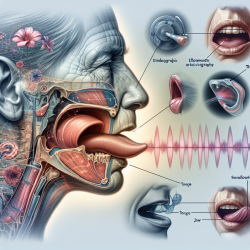Introduction
In the quest to enhance therapeutic outcomes for schizophrenia (SZ), recent research has focused on the role of atypical antipsychotic drugs (AAPDs) in modulating stress-related metabolic pathways. This blog delves into the findings of a pivotal study titled Therapeutic efficacy of atypical antipsychotic drugs by targeting multiple stress-related metabolic pathways, exploring how practitioners can leverage these insights to improve treatment strategies.
Understanding the Study
The study highlights the complex interplay between stress and SZ, focusing on how AAPDs like clozapine, risperidone, and aripiprazole influence stress responses in the brain's prefrontal cortex (PFC) and hippocampus. Using advanced metabolomic approaches, researchers identified stress-induced biomarkers and metabolic pathways that AAPDs can modulate, offering new therapeutic targets.
Key Findings and Implications
- Biomarkers and Metabolic Pathways: The study identified several stress-induced biomarkers, including creatine, choline, and progesterone, which are crucial in the creatine-phosphocreatine circuit and purine pathway. These biomarkers provide insight into how stress affects brain metabolism and how AAPDs can help restore balance.
- Therapeutic Potential: The findings suggest that AAPDs partially restore stress-induced deficits by increasing levels of creatine, progesterone, and phosphatidylethanolamines (PEs). This indicates a potential for combined therapy using ATP fuel, antioxidants, and omega-3 fatty acids to enhance therapeutic outcomes.
Practical Applications for Practitioners
For practitioners, these insights offer a pathway to refine treatment plans for SZ patients. By understanding the metabolic pathways influenced by AAPDs, practitioners can tailor interventions to target specific biomarkers, potentially improving patient outcomes. Additionally, the study encourages further research into combined therapies that could synergistically enhance the effects of AAPDs.
Encouraging Further Research
While the study provides a robust foundation, it also highlights the need for further research to fully understand the mechanisms of AAPDs and their impact on stress-related pathways. Practitioners are encouraged to stay informed about emerging research and consider collaborative studies to explore new therapeutic strategies.
Conclusion
This research underscores the importance of a data-driven approach in speech language pathology and therapeutic interventions for SZ. By leveraging these findings, practitioners can enhance their skills and contribute to better outcomes for patients. For those interested in a deeper dive into the study, the original research paper can be accessed here.










